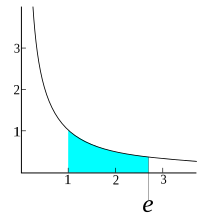
Photo from wikipedia
| african arts SUMMER 2023 VOL. 56, NO. 2 Sinethemba Ngubane is an artist who works predominantly in the medium of ceramics but includes sculptures in large installations. She was… Click to show full abstract
| african arts SUMMER 2023 VOL. 56, NO. 2 Sinethemba Ngubane is an artist who works predominantly in the medium of ceramics but includes sculptures in large installations. She was born in 1991 in Durban, South Africa, and completed a national diploma in Fine Art in 2014 and Bachelor’s degree with distinction at Durban University of Technology in 2015. She has exhibited in academic group shows in KZNSA Gallery, Durban University of Technology, Steve Biko Art Gallery, and artists’ group shows in art space, Durban. Ngubane is currently studying for a Master in Fine Art degree at Durban University of Technology. She is an award winner of the Emma Smith Scholarship. This paper critically analyzes the vernacular symbols of Black intersex children articulated in her works produced between 2007 and 2016 and the ideas they convey. In defining “vernacular,” Gupta and Adams (2018: 2) posit that “vernacular defines that which is domestic or indigenous.” While the definition of “vernacular” implies “indigenous,” this does not mean Ngubane’s artworks are indigenous African art or its continuation; the term is adopted in theorizing her contemporary African art for representing symbolism rooted in cultural practices and experiences that are indigenous to Africa. In this context, it is in discourse with installations that represent human elements and symbols deeply rooted in African cultures. However, such portrayals in Ngubane’s installation sculptures may reference not identifiable cultural elements, but rather symbols associated with certain cultural practices against Black intersex children in Zulu culture. This focus on her installations is significant, not merely because she is a Black female artist on the African continent who is marginalized in mainstream art historical discourse, but because her installations contribute an important thematic nuance to African art. Although Ngubane is a young, practicing contemporary African artist, her inclusion in a mainstream paper was informed by her unique mode of exploring the distorted bodies of those Black children in art. This paper thus contributes an art historical discourse on the artist’s vernacular symbolism to global African art history. This is also significant for South Africa, as her works contribute narratives of different forms of contemporary distortions to a national history that had been marred with tortured and distorted bodies from apartheid brutality. In this paper, the term “intersex” is defined as the condition of a child whose sex deviates from “male” or “female” because he or she mixes anatomical components of both sexes that do not correspond to typical definitions of male and female (Husakouskaya 2013: 11; Jenkins and Short 2017: 92). To interrogate Ngubane’s installation sculptures that reflect on the vernacular symbols of those children, five works were selected: Rebirth of Bio-politics (2015) (Figs. 1–5), Nonkiloyi (2016) (Fig. 6a–b), Impaired (2016) (Fig. 7), Gaze of Disfigured (2016) (Fig. 8), and Excavated (2016) (Fig. 9). The contents and contexts of these works are interrogated through formal analysis and cultural history. Formal analysis interrogates the formal elements of each installation and the ideas the portrayal may convey, while cultural history situates the context in the history invoked in the work. These are combined with visual hermeneutics theory, which is adopted to narrate1 the experiences in the works by returning to history (Tolia-Kelly and Morris 2004: 158). The following research questions guided the interrogation: What cultural imageries did Ngubane depict in her installation sculptures? What ideas does the analysis of the works reveal? The discussion focuses on Ngubane’s media and how she takes a unique artistic path in coming to terms with symbolisms she considers African, as well as why she represents such cultural symbolism in contemporary African art. Another focus is Ngubane’s personal influences, frame of reference, knowledge base, ideological stances, and philosophy. African Vernacular Symbols of Black Intersex Children in Sinethemba Ngubane’s Installations (2007–2016)
Journal Title: African Arts
Year Published: 2023
Link to full text (if available)
Share on Social Media: Sign Up to like & get
recommendations!